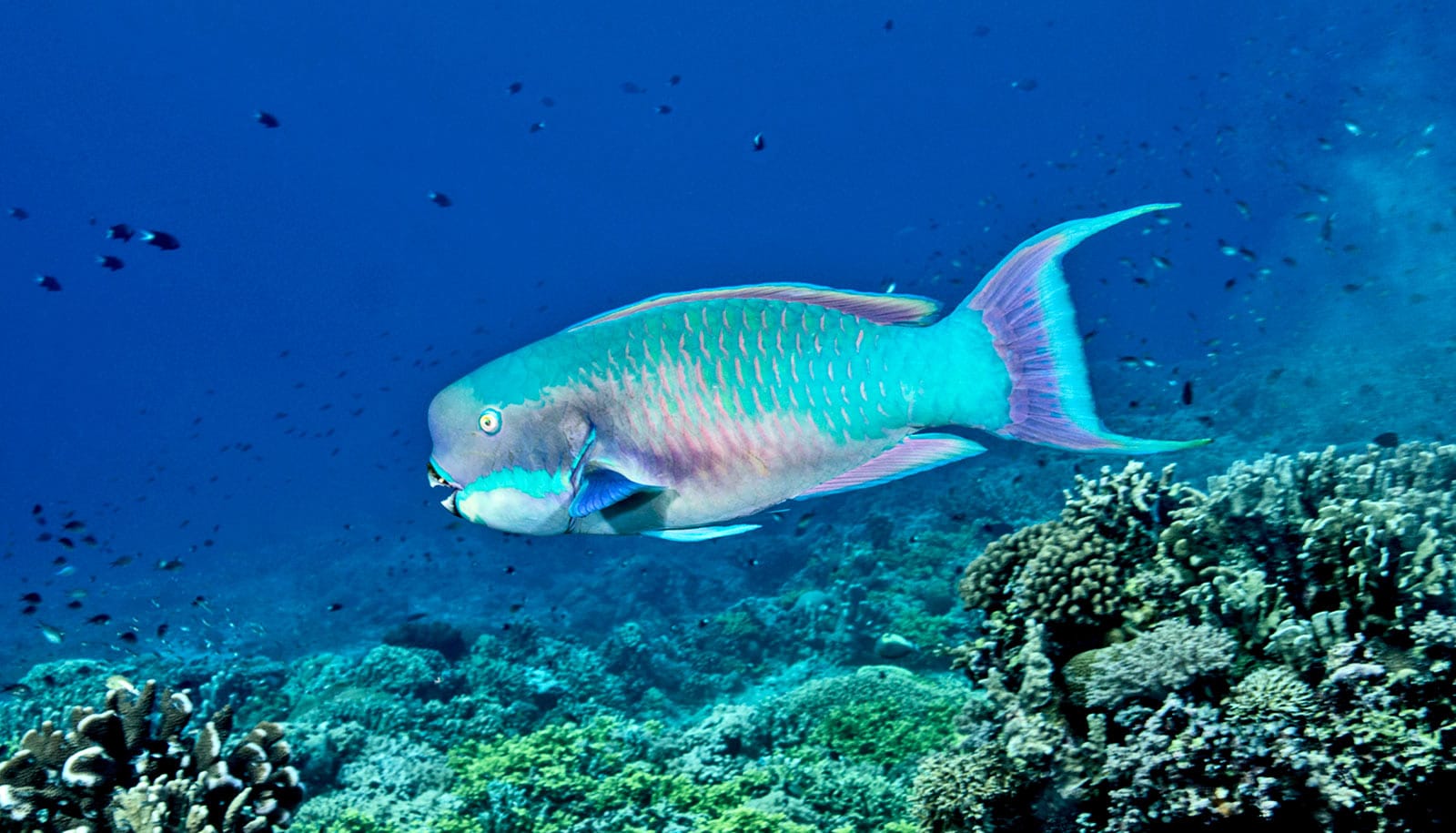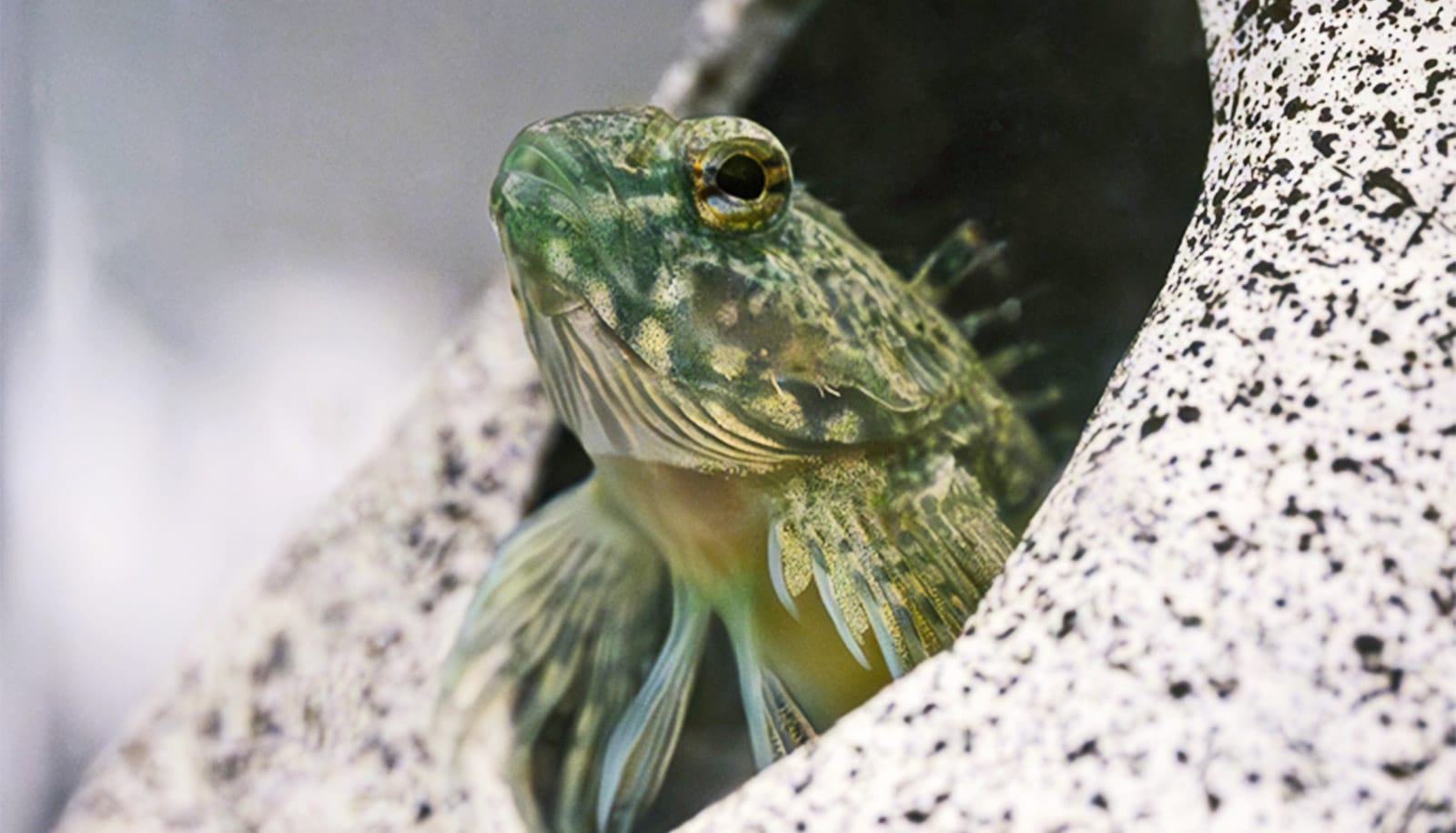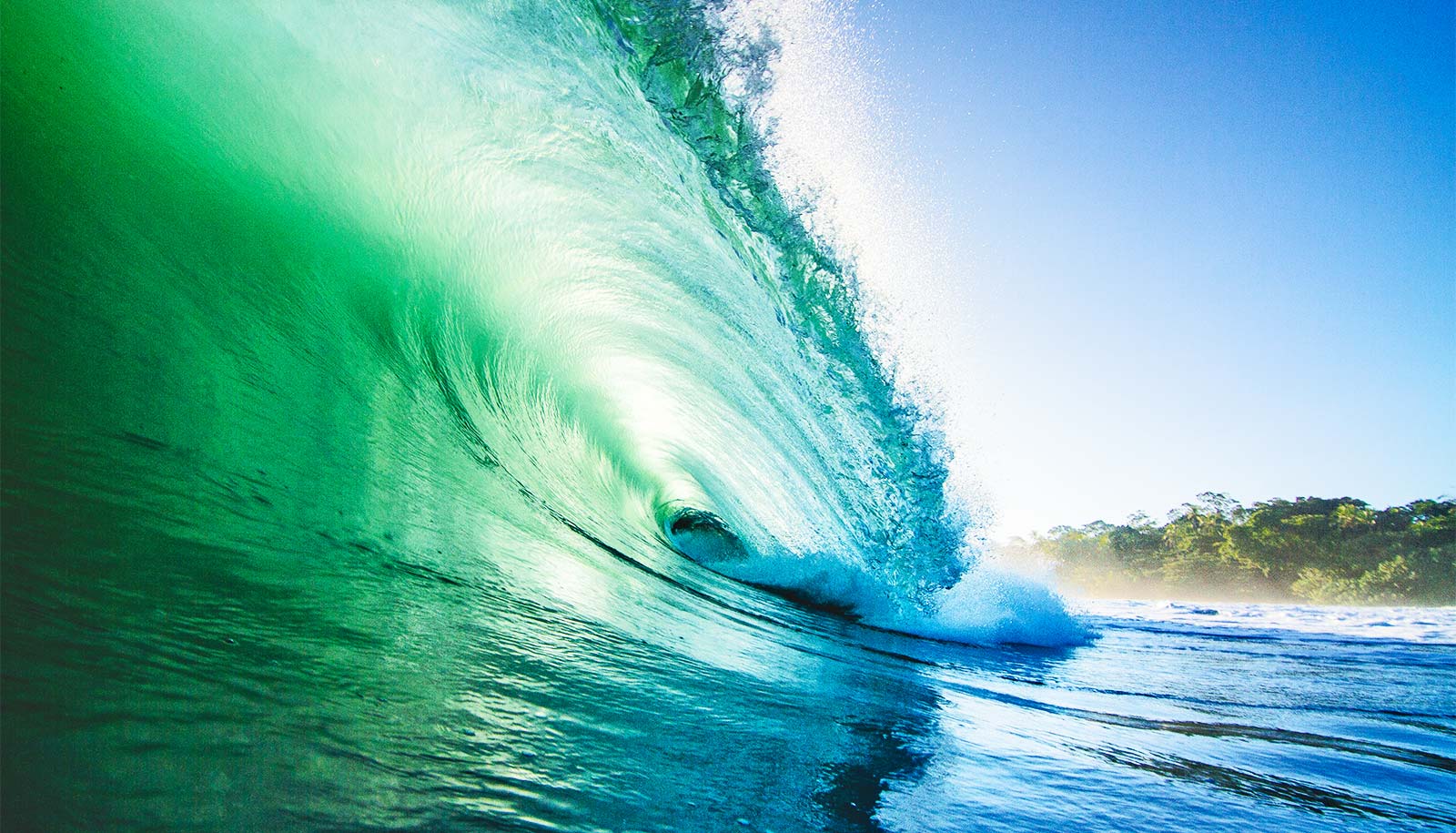Steephead parrotfish (Chlorurus microrhinos) in the central Pacific essentially “farm” their food by strategically rotating through algae patches, waiting for each patch to regrow before dining on it again.
The large algae-eaters also defend their feeding territory while the food patches recuperate sufficiently, a new study finds.
The study and another paper by the same authors, describing movement patterns of C. microrhinos, appears in the Marine Ecology Progress Series.
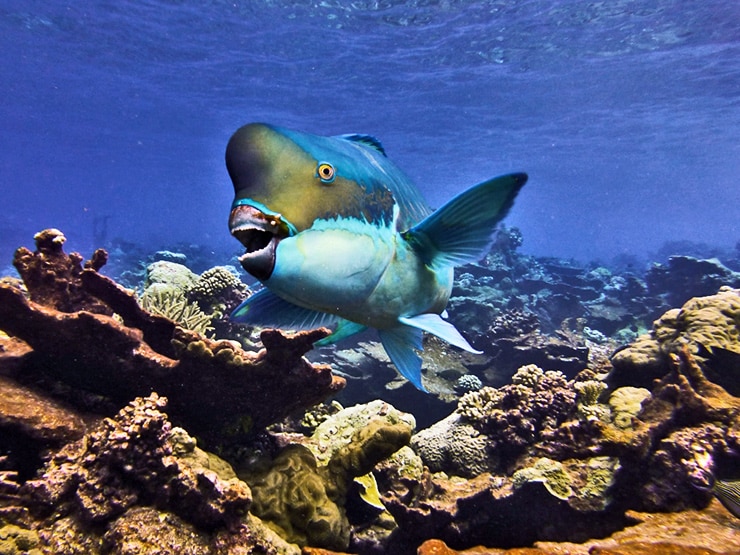
“Herbivores are really important for coral reef ecology because there’s a constant battle between coral and algae,” explains Peter Carlson, lead author of the first paper. Carlson is a researcher in the Caselle Lab at University of California, Santa Barbara’s Marine Science Institute (MSI). “Anything that can remove algae is essentially considered a net positive for coral growth.”
Working on Palmyra atoll, 1,000 miles south of Hawaii, the researchers noticed an abundance of bite scars in very small areas of algae growing on dead coral. They followed these patches through time and found parrotfish were feeding heavily in each patch for a short period of time. Then, the fish would allow that exact location to recover before returning to harvest the algae again.
“The fish would come back to the same area and defend it against other individuals of the same species,” Carlson says. “Essentially, they’re farming by using their environment very strategically.”
It turns out these parrotfishes are doing a service to the coral reef. Turf algae have been shown to be harmful, even lethal, to juvenile corals. When the parrotfish bites scrape the coral, they create pockets of space without the algae, which may enable tiny coral larvae to settle and grow.
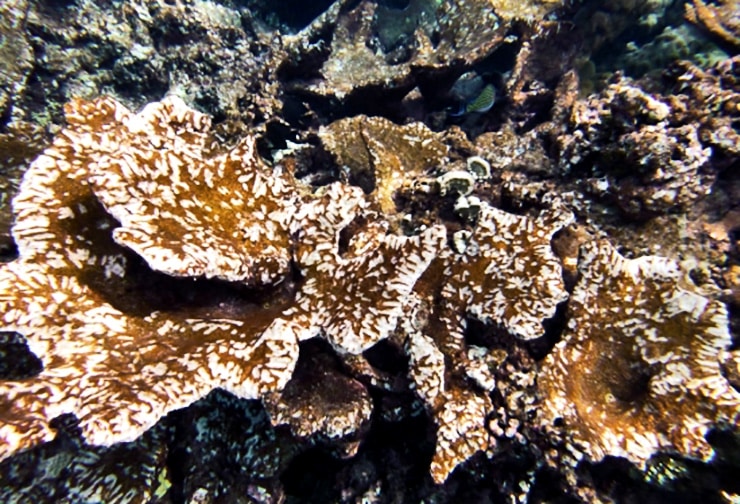
“In the habitat dominated by this low-lying turf algae, we saw this intensive feeding behavior of the parrotfish,” Carlson notes. “But in coral-dominated areas, their feeding, while still concentrated, was spread over a much greater area.”
This research clearly demonstrates that the movement patterns of these parrotfish are influenced by the available food in a particular habitat. It also highlights the importance of variation in food availability to their social structure.
“In places where there was lots of the turf algae that they like to eat, we saw only big males,” says coauthor Katie Davis, a researcher in the Caselle Lab. “There were hardly any smaller individuals or females. However, in coral-dominated sites, we saw more of a haremic social structure, with one or two large males accompanying a group of smaller females.”
These parrotfish care about competition, not predators
The second paper took a multiscale approach to tracking parrotfish movements, which is important information for conservation purposes. Because herbivores support coral reef health, many are safeguarded in marine protected areas. But to properly create and manage adequate space for these fish, managers need to know the range of their movements.
To make that determination, the researchers used long-term acoustic monitoring to track patterns over the years. They also monitored the animals from a boat to document their daily space use and employed fine-scale GPS tracking to measure their meter-scale movements over a couple of hours.
Taken together, these different scales and varied tools confirm that the impact of individual parrotfish feeding is confined to small areas, even though their overall range is quite large.
“We found they were moving more than a kilometer offshore almost on a daily basis and that those movements were synced with tidal cycles,” lead author Davis explains. “We concluded that they were likely going offshore to spawn because many coral reef fishes sync their spawning excursions to tidal cycles. However, the extent of these large movements had not been previously reported in this species, which is new information that managers can use when designing spatial protections.”
Shark count at Palmyra yields surprising numbers
According to MSI research biologist Jennifer Caselle, coauthor of both papers, this research demonstrates the need for multiple tools to comprehensively understand the movement and behavior of coral reef parrotfishes.
“Our studies on Palmyra are providing information on a species whose abundance has been reduced greatly due to overfishing in most areas of the world,” Caselle says. “Yet this is the type of fish that people want to bring back to help save coral reefs, so it’s important to understand their behavior.”
Source: UC Santa Barbara
